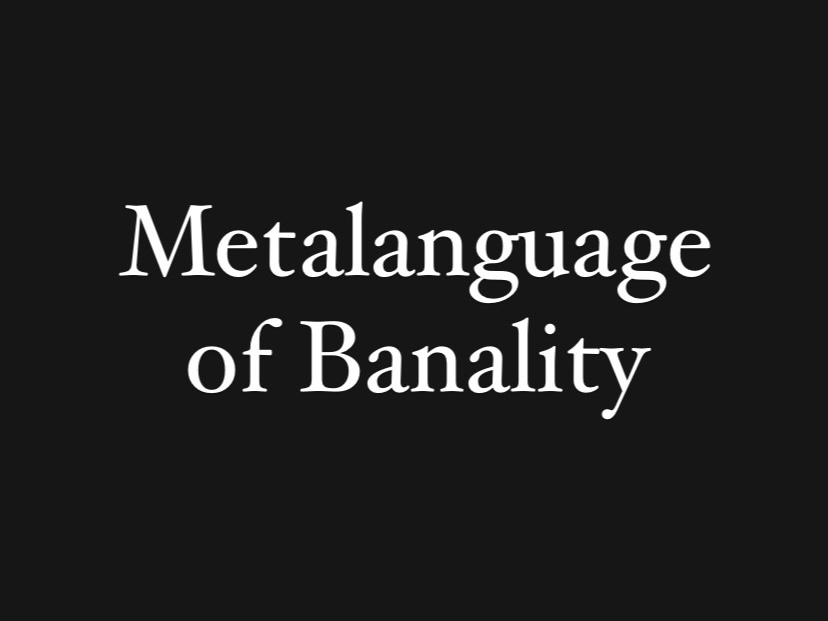Baudrillard posits, amidst the pervasive milieu of apathy and indifference, that the very influence of art appears to amplify these prevalent sentiments. A substantial metamorphosis has, incontrovertibly, beset the entire domain of artistic expression, transmuting it into a banal metalanguage. Evidently, the extensive tentacles of mass production and the unabated commodification of creative endeavors have propelled our existence into a sphere where the luminescence of originality is shrouded, and the profundity of artistic endeavors is inexorably diminished. Stripped of its erstwhile potency, art now looms as a mere specter of its former self, a vessel divested of its inherent capability to summon forth genuine emotions and kindle the fires of profound introspection.
Once an image is captured and disseminated, it regrettably withdraws from the authentic reality of the world. Its proclivity for manipulation subtly distorts our perception, often leaving us unsettled and casting doubt upon the very foundations of our worldview. In this age of unbridled image production and consumption, iconoclasm assumes a novel guise. No longer do we witness the physical obliteration of images; instead, we find ourselves engulfed by a veritable deluge of fabricated representations. Our senses succumb to the sheer abundance of these images, leaving us adrift upon a sea of superficiality, bereft of substance and profound meaning.
Once a conduit through which the imagination transcended the constraints of reality, the image has now supplanted reality itself. Its quintessence, its intrinsic capacity to simulate, has been diluted. The ascendency of virtual reality has ushered in this transformative state of affairs, obliterating the demarcation between the tangible and the virtual. It is as though the very fabric of reality has imbibed its own reflection, rendering itself translucent. In this era of untrammeled transparency, the enigmatic secrets that once held our collective psyche in thrall have been laid bare, and deceit has become a vestige of the past.
Illusion, a pivotal facet of artistic expression, is rooted in the concept that entities are divorced from their own appearances and denuded of their essence. Yet, in the contemporary tableau, entities exist wholly within their own visibility and virtuality, ruthlessly transcribed onto screens and replicated in an inexhaustible array of digital reproductions. In this expansive panorama, both reality and representation vanish, leaving behind an eerie void.
We find ourselves ensconced in an epoch characterized by artistic desolation, where the boundaries between reality and illusion erode, image production attains unprecedented heights, and the allure of the virtual captures the collective imagination. The profound and transformative essence of art, it seems, has succumbed to our insatiable penchant for consumption and the relentless march of technology.
At the crux of Baudrillard’s contentions lies the notion that the pursuit of artistic expression inadvertently contributes to the dissemination of apathy. One might cogitate on how a mode of expression historically lauded for eliciting profound emotions, engendering intellectual discourse, and effecting societal change could be ensnared in such a paradoxical fate.
To unravel this enigma, we must scrutinize the broader sociocultural context within which art unfolds. In an epoch dominated by consumerism and the ceaseless quest for efficiency, the commodification of art has emerged as an omnipotent force. The market-driven thirst for novelty and instant gratification begets a culture steeped in banality, frequently relegating artistic endeavors to the realm of spectacle or ornamental objects.
In this hyperconnected age, images metamorphose into a form of currency, inundating our senses and blunting our capacity for discernment. The realm of the virtual, with its boundless possibilities and digital avatars, beckons us to a realm where reality and illusion coalesce seamlessly. The proliferation of screens, each projecting an unending stream of images, begets a fragmented landscape wherein the demarcation between the real and the fictitious becomes increasingly nebulous.
Notwithstanding this disconcerting backdrop, a reassessment of our rapport with art remains conceivable. In this epoch of apathy, the artist and the philosopher must assume complementary roles.
The philosopher acknowledges that art, by its very nature, possesses the capacity to disrupt the prevailing status quo, to assail our preconceived notions, and to rouse us from our complacent stupor. The latent transformative power of art can be reclaimed through its ability to elicit emotions, provoke introspection, and transcend the boundaries of conventional thought.
To extricate ourselves from the metalanguage of banality, artists and philosophers must muster the audacity to defy the expectations of the market-driven art world. They must summon the courage to interrogate the very essence of artistic expression and its symbiotic relationship with society, thereby forging untrodden paths. The only tenable trajectory involves acts of radical creativity, subversion, and an unwavering refusal to acquiesce to the commodification of art.
In this pursuit, the philosopher ought to adopt the mantle of a sagacious guide, deciphering the intricacies of human existence and engaging in profound dialogues spanning aesthetics, ethics, and metaphysics. Through assiduous philosophical inquiry, the philosopher, rather than dismissing the matter or, in the worst-case scenario, merely ignoring it, must endeavor to unearth the profound truths that lie beneath the veneer of our mundane reality. Thus, facilitating the revelation of the underlying principles that mold our perception of art and its role in society.
BIBLIOGRAPHY:
Jean Baudrillard, “The Consumer Society: Myths and Structures” (France)
Walter Benjamin, “The Work of Art in the Age of Mechanical Reproduction” (Germany)
Arthur C. Danto, “The Transfiguration of the Commonplace: A Philosophy of Art” (United States)
Clement Greenberg, “Art and Culture: Critical Essays” (United States)
Susan Sontag, “On Photography” (United States)
Guy Debord, “The Society of the Spectacle” (France)
Jacques Rancière, “The Emancipated Spectator” (France)
Richard Shusterman, “Thinking through the Body: Essays in Somaesthetics” (United States)
John Berger, “Ways of Seeing” (United Kingdom)
Noël Carroll, “The Philosophy of Art: A Contemporary Introduction” (United States)
